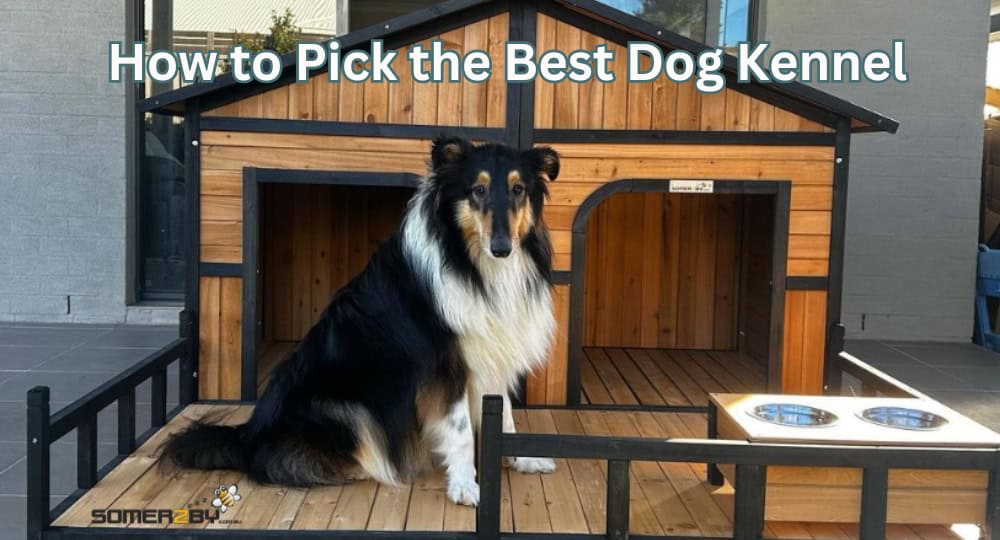Dogs, How To, Info Guides
How to Pick the Best Dog Kennel for Your Dog: A Guide
Choosing the right outdoor dog kennel can make a big difference in your dog’s happiness and well-being. The right kennel can provide a sense of safety and security, where your pup can feel comfortable and relax while you’re away or busy. Every dog is different, so the best kennel for one pup might not suit another.
In this guide, we’ll help you figure out what to look for, so you can find the perfect kennel that suits your dog and your backyard.
Key Takeaways
-
A dog kennel is a secure outdoor shelter built to protect your dog from harsh weather conditions.
-
There are four main types of kennels: Timber, Plastic, Canvas, and Metal.
-
Consider: Size, Breed Suitability, Material, Durability, Comfort, Features, Practicality, Maintenance, Cost and Value, as well as Environmental Impact.
-
Mistakes to avoid are Not Considering Future Growth, Ignoring Ventilation and Climate Needs, Overlooking Ease of Assembly and Portability, and Prioritising Cost Over Safety and Quality.

Understanding the Different Types of Outdoor Dog Kennels
Outdoor dog kennels come in all shapes, sizes, and materials, so it’s important to choose one that suits your dog’s needs and your lifestyle. There’s no one-size-fits-all solution here. Let’s break down the main types to help you decide what’s best for your dog.
Traditional Timber Dog Kennels
These are wooden enclosures made to be sturdy and provide your dog a comfortable space to take shelter in. Many have raised floors for airflow, sloped roofs to let rain run off, and come in a range of wood finishes that look great in the backyard. They’re ideal for dogs who spend a lot of time outdoors and for owners who prefer something solid and natural-looking.
One of their best features is their insulation, which will help keep your dog warm in winter and cool in summer. On the downside, timber kennels are heavier than plastic and require a bit of maintenance to prevent rot or pest damage.
Plastic Dog House
Plastic dog kennels are a more lightweight, modern option. They’re super easy to clean, weather-resistant, and don’t require much upkeep at all. Many also have built-in ventilation and slightly raised floors to keep things dry and comfortable inside. They’re a great choice for dog owners who want something low-maintenance and easy to transport. That said, they’re not as well insulated as timber kennels and might not hold up as well in extreme weather.
Canvas Dog Kennels
Canvas dog kennels are lightweight, portable shelters made from tough fabric stretched over a frame. These kennels are designed for temporary use, perfect for camping trips, beach days, or providing shade at the park. The main benefit of canvas kennels is how travel-friendly they are. However, they are not designed for everyday use and do not offer the same weather protection as plastic or timber kennels.
Metal Dog House
Metal dog kennels are secure enclosures made from steel or heavy-duty wire. They’re a great option if you’ve got a strong or energetic dog, or if you just want something solid that’ll stand up to a bit of wear and tear. These kennels are often used in backyards or on farms and are especially useful for dogs who like to chew or try to escape. However, metal dog kennels are not insulated, so they can get pretty hot or cold depending on the weather.
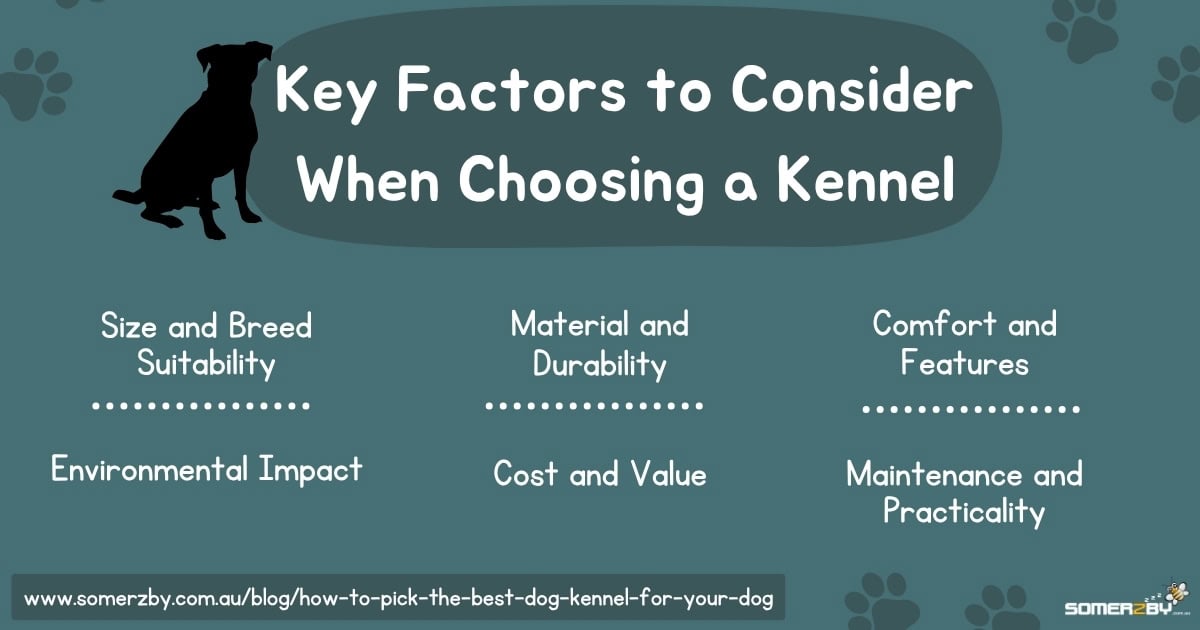
Key Factors to Consider When Choosing an Outdoor Dog Kennel
From your dog’s breed and size to the materials used, ease of cleaning, and even the environmental footprint, there’s a lot to think about. Let’s take a closer look at the key factors to help you make the best choice.
Size and Breed Suitability
When choosing a dog kennel, size really does matter. The golden rule to remember? Your dog should be able to stand up, turn around easily, and stretch out fully when lying down. Bigger, active dogs, like Kelpies or Labradors, will appreciate more space to move around and stay mentally stimulated, while smaller or more laid-back breeds often prefer a snug, den-like spot.
Material and Durability
Material matters when it comes to finding the best dog kennel. Wooden kennels offer natural insulation, great for colder climates. Plastic options are low maintenance, easy to clean, and lightweight if you need to move them around.
Comfort and Features
A good kennel should offer more than just shelter. It should be a cosy retreat. It’s worth looking for features like insulation, ventilation, raised floors, one or two entrances, and a waterproof roof. Easy cleaning and secure latches add convenience for both you and your dog.
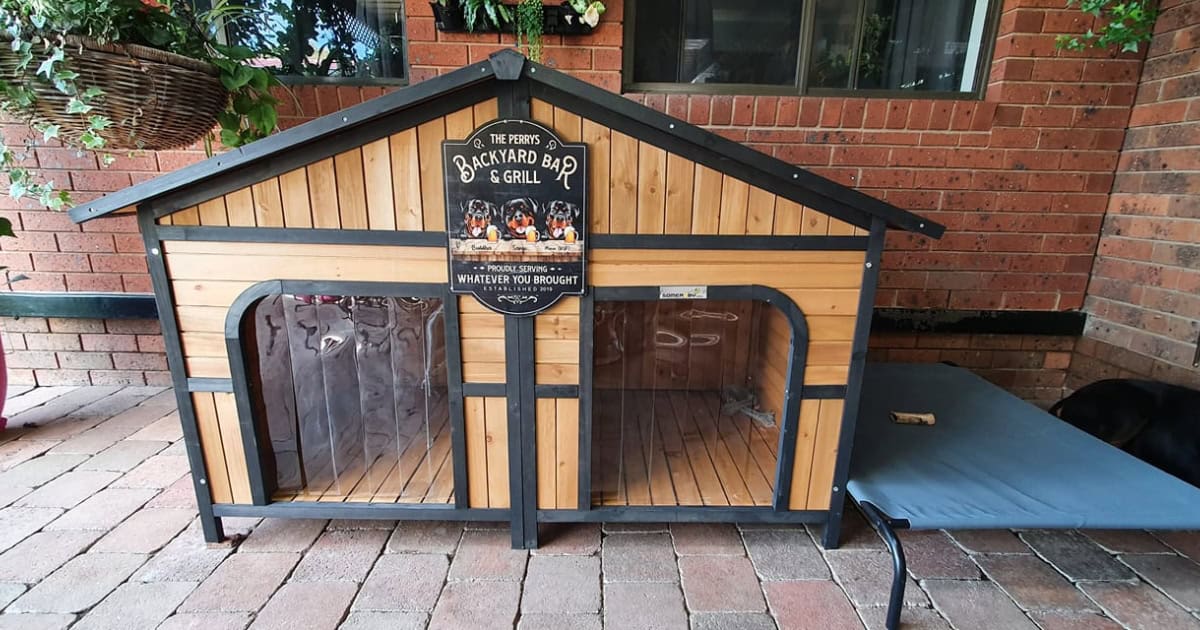
Maintenance and Practicality
No matter which kennel you choose, some materials are definitely easier to manage than others. Our Poppy and Lotus plastic kennels are great low-maintenance options as they’re easy to wipe down, resist odours, and don’t need much upkeep. Metal dog kennels are strong and secure, but they can rust over time if not properly coated or maintained.
Cost and Value
Plastic kennels are often the most budget-friendly option, making them ideal for those looking for a low-cost or temporary solution. They’re affordable, low maintenance, and easy to replace if needed. Wooden kennels tend to cost more upfront, but with proper care, they can last for years, making them a smart long-term investment.
Environmental Impact
If sustainability is important to you, it’s worth considering the environmental impact of your dog’s kennel. Wooden kennels, like the Cabin or Den, are often the more eco-friendly choice when made from responsibly sourced timber. They’re renewable, biodegradable, and have a smaller carbon footprint when sustainably produced. Plastic kennels, while practical, are made from non-renewable materials and aren’t biodegradable.
Common Mistakes to Avoid When Buying an Outdoor Dog Kennel
Choosing a dog kennel might seem simple, but it’s easy to overlook a few key details that can make a big difference in your dog’s comfort and safety. Avoiding these common mistakes can help you find the perfect dog kennel.
Not Considering Future Growth
One of the biggest mistakes new dog owners make is choosing a kennel that’s just the right size for their puppy now, without thinking about how quickly they’ll grow in just a few months. It’s always better to follow a dog kennel size guide and choose a kennel with extra space, so your dog has room to move, stretch, and feel comfortable as they grow. Grab a measuring tape and factor in your dog’s full-grown size to make sure there’s enough space, not just now, but for the years to come.
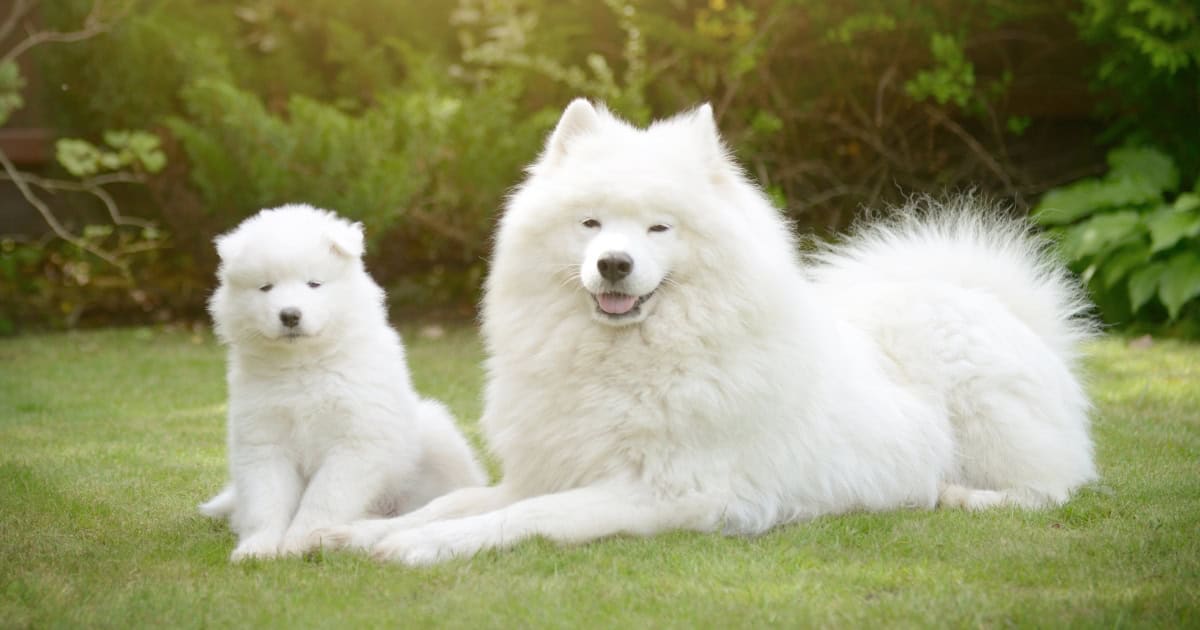
Ignoring Ventilation and Climate Needs
In hot climates like Australia, ventilation is crucial. Poor airflow kennels can become stuffy and dangerously hot, putting your dog at risk of overheating or even heatstroke. Look for kennels with features that have built-in vents, raised floors, and materials that keep things cool. Somerzby’s dog kennels are designed with Aussie weather in mind, offering well-ventilated spaces that help keep your dog cool and comfortable all year round.
Overlooking Ease of Assembly and Portability
Some outdoor dog kennels can be tricky to assemble, especially if they come with a complicated design or unclear instructions. And once they’re up, moving them can be just as frustrating. Somerzby’s kennels are designed with convenience in mind. They’re easy to set up, take down, and move around if needed.
Prioritising Cost Over Safety and Quality
Going for the cheapest kennel can end up costing you more in the long run. Low-quality kennels can be worn out quickly, their safety at risk. For this reason, it’s worth investing in something sturdy and reliable, like Somerzby’s kennels, that’s built to last and keeps your dog safe and comfortable every day.
Understanding the Purpose of a Dog House
What Is a Dog Kennel?
A dog kennel is a secure outdoor shelter built to protect your dog from the elements. Unlike indoor crates, kennels offer more space and are made for long-term outdoor use, giving your pup a safe place to relax and play. Kennels offer permanency, giving your pup room to move around while keeping them sheltered and contained when needed.
What Are The Benefits Of An Outdoor Dog House
Improved Safety and Security
An outdoor dog kennel keeps your pet safe from wandering off, getting lost, or encountering dangerous wildlife. It also offers maximum protection from harsh weather, providing a cool, shaded area in summer and a dry, sheltered space in winter. In Australia’s hot summers and wet seasons, a quality kennel is an essential part of keeping your dog secure and comfortable outdoors.
Training and Behaviour Management
Kennels are helpful when it comes to training your dog, especially for potty training and setting boundaries. Giving your dog a consistent outdoor space helps reinforce good habits and can reduce unwanted behaviours like digging in your garden or barking at the back door.
Mental and Physical Wellbeing
Spending time outdoors keeps your dog mentally stimulated and physically active. A kennel is a great way to reduce boredom, anxiety, and destructive habits when you can’t be with them all day.
Peace of Mind for Owners
Knowing your dog has a safe and secure outdoor area while you’re out running errands or working offers serious peace of mind. You don’t have to stress about what mischief they’re up to or whether they’re safe, because you’ve already made sure they’re comfortable and protected.
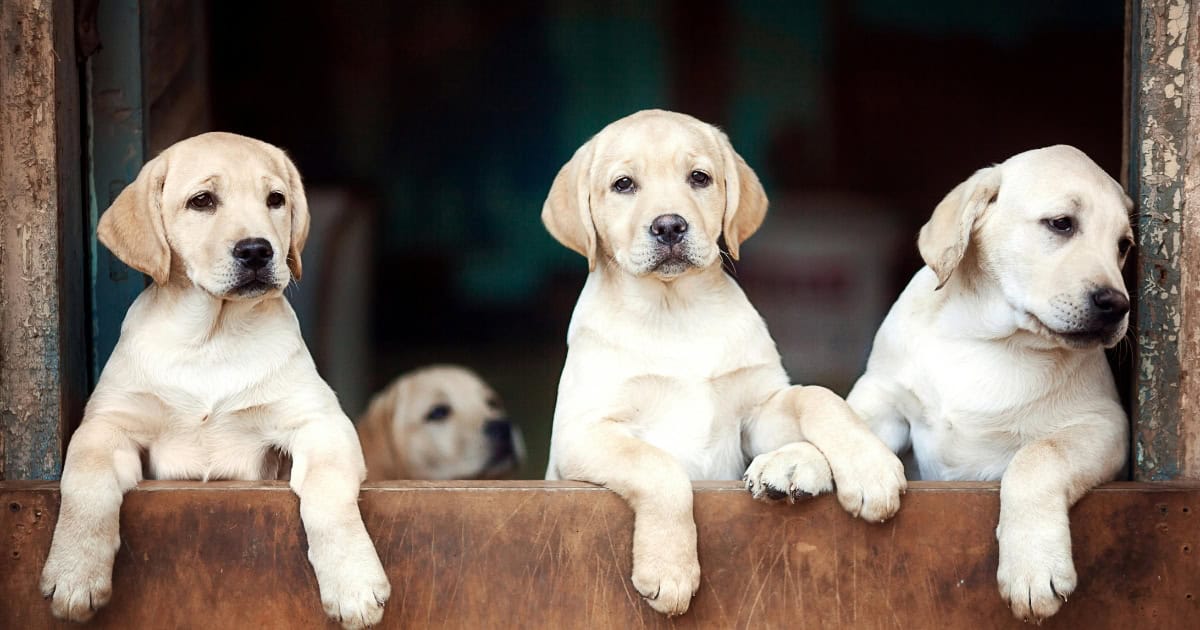
FAQs
How do I keep my dog’s kennel clean and hygienic?
To keep your dog’s kennel clean and hygienic, start by removing waste daily and washing any bedding or mats weekly. Wipe down all surfaces with pet-safe disinfectant to prevent bacteria and odours. Adding a removable tray makes clean-up easier. Plastic kennels are easy to clean, needing just a quick hose down, while wooden kennels may need sealing to stay dry and odour-free.
How do I choose the best location for my dog kennel in my backyard?
Choose a spot in your backyard that’s sheltered from harsh sun, wind, and rain but still offers good airflow. Place the kennel on flat, stable ground, away from hazards like falling branches or pools. Ideally, keep it in view of your home so you can easily check on your dog.
What material is best for an outdoor dog kennel?
The most common materials for outdoor dog kennels are wood and plastic, though canvas and metal are also popular options. The best choice depends on factors like your budget, how the kennel will be used, your location, and the local climate throughout the year.
How can I make my dog feel comfortable using their new kennel?
To help your dog settle into their new dog kennel, introduce it gradually. Start by letting them explore the new space on their own with the door open. Place familiar items inside, like their dog bed, favourite toys, or a blanket that smells like home. Use treats and praise to create positive associations and encourage your dog to feel safe and relaxed in their new outdoor retreat.
Read more about how to help your dog adjust to an outdoor kennel here.
Can outdoor kennels be used year-round in Australia?
Yes, outdoor kennels can be used throughout the year in Australia, as long as they are made from quality materials and offer proper insulation. Look for features such as waterproof roofing, raised floors, and good ventilation to keep your dog comfortable in all seasons. Somerzby’s kennels are specifically designed for Australian conditions, helping to keep your dog warm and dry in winter, and cool and shaded in summer.
Toni’s Wrap
Choosing the right outdoor dog kennel means more than just picking a place for your dog to sleep. It’s about creating a safe, secure, and comfortable environment tailored to your pup’s needs. Whether you go for timber or plastic, the best dog kennel is one that suits your dog’s size, lifestyle, and your local climate.




